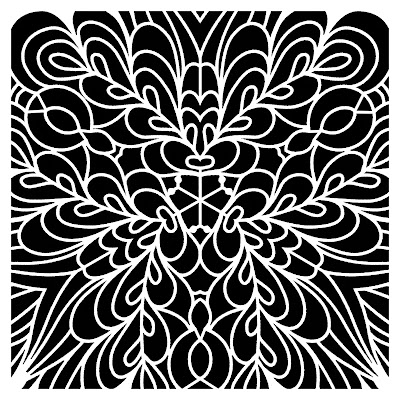Puckers are good for kissing. Not so good for collage papers. Today's post will list 5 things I've learned while making collages.
 |
| Above: I developed this mixed-media collage using assorted papers, including papers I'd printed using stencils and masks, via a variety of stencil/mask-using techniques. The substrate is a stretch canvas. |
If your collages pucker, here are my suggestions.
(1) I learned from MaryBeth Shaw that, at least for the larger collage papers, it's good to lightly mist them with water on the back before adding adhesive. The mist swells the paper's fibers and that's going to work to the artist's advantage in eliminating puckers.
(2) Use the driest adhesive you can find. My personal favorite is extra-heavy matte gel. Low viscosity ("runny") adhesives throw down the welcome mat for wrinkles and puckers.
(3) After each collage piece is added to its substrate, go over it with a hard rubber brayer. If a stretched canvas is your substrate, place a book or pile of magazines under the unframed bottom of the canvas, so the pressure of the brayer won't over-stretch the canvas and make it sag from its built-in frame.
(4) As soon as the gluing is finished, it needs to be pressed under a pile of books. If your substrate is a stretched canvas, keep that pile of magazines or that book under the unframed area of the canvas, for the same reason -- to keep pressure from causing a sag in the canvas.
(5) Between the top of the artwork and the pile of book-weights, place a sheet of wax paper or waxed deli paper.
The waxy paper (A) soaks up any residual moisture and (B) protects the art from sticking to the book-weights if there happens to be any residual adhesive on the face of the art.
My personal preference is to let the pressing period last all night. If too much adhesive was added, the pressing period will take longer.
 |
| Above: Most of this collage was created using prints made with (top layer) 9" x 12" Garden Montage and (bottom layer) 9" x 12" Prayer Flags. The right side was made using a print created with 6" x 6" Sprigs. |
Thank you for taking time to check out my blog today! To scroll thru the pages of my StencilGirl stencils and masks, please start here. To subscribe to my blog by email, please use that option in the upper right sidebar.























































